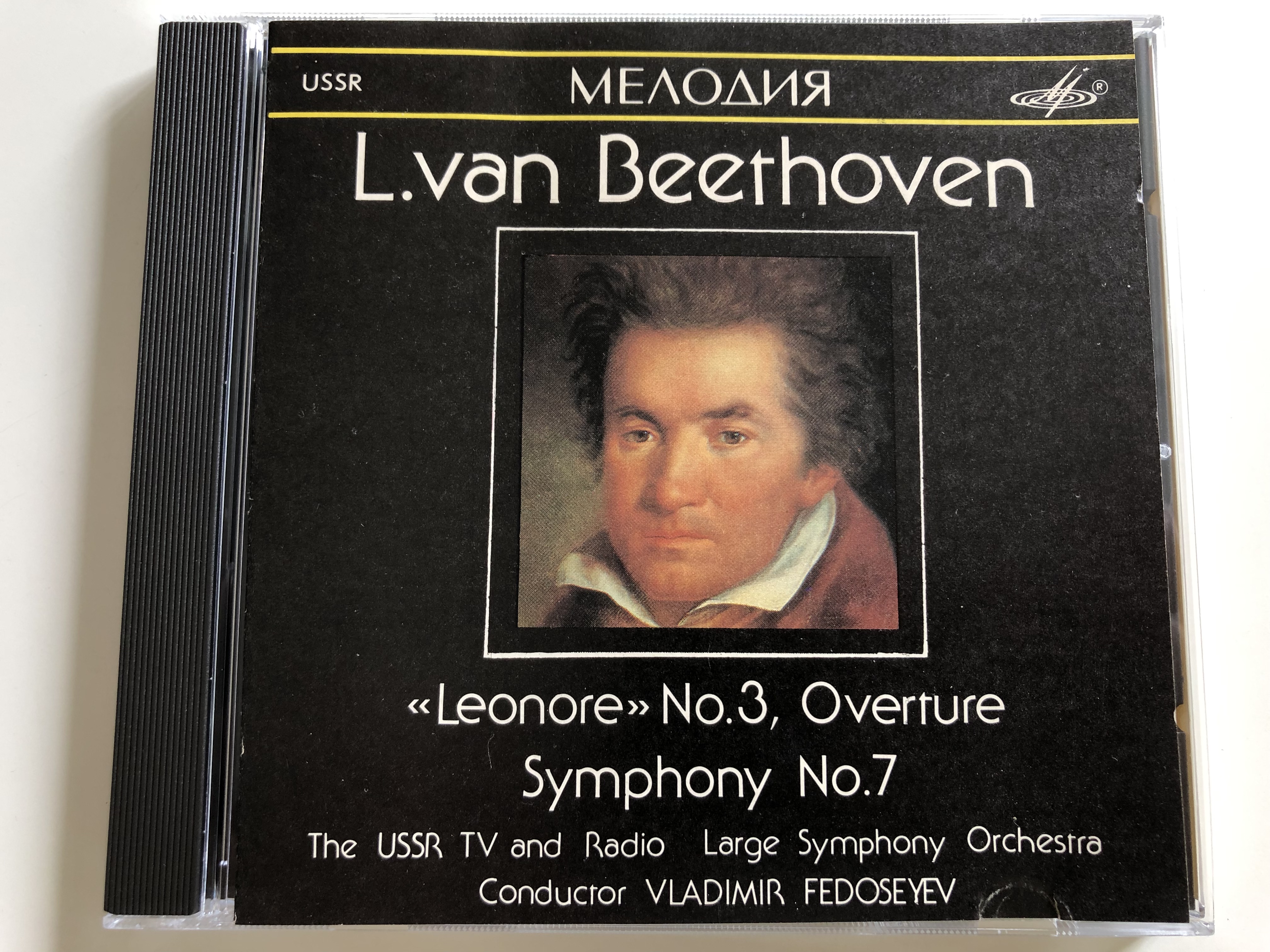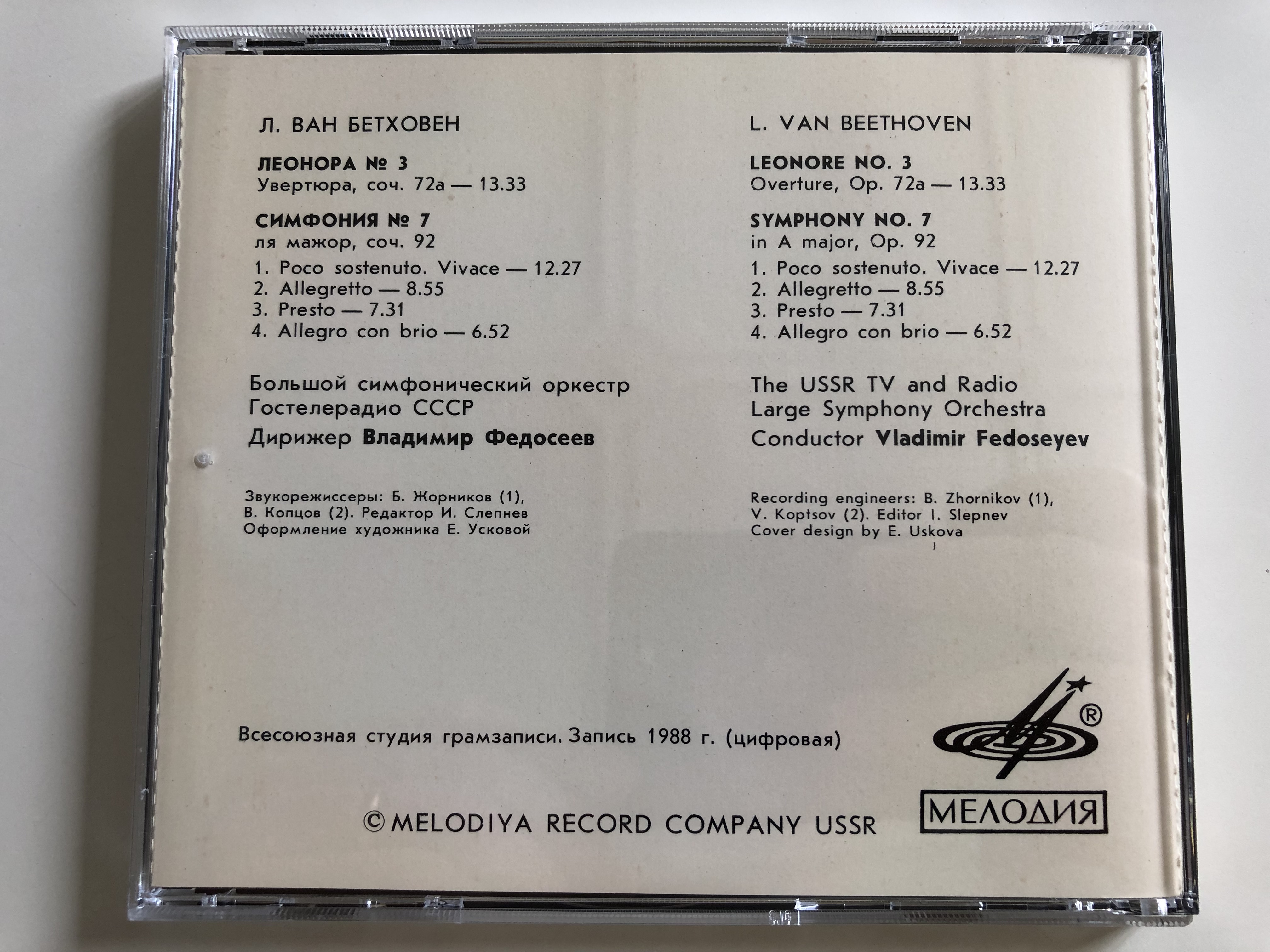Description
L. van Beethoven - Leonore No. 3, Overture, Symphony No. 7 / The USSR TV and Radio Large Symphony Orchestra / Conductor Vladimir Fedoseyev / Melodiya Audio CD 1988 / Мелодия
SUCD 10-00008
MADE IN RUSSIA
English Summary:
There are no fewer than four separate overtures for Beethoven's only opera Fidelio. This unusual state of affairs can be attributed to the extremely long and convoluted evolution of the opera, which actually began life as Leonore, the first version of which was staged in 1805, when Napoleon's troops were overrunning Vienna.
The work concerns the Spanish nobleman Florestan, who has been wrongfully imprisoned by his enemy Don Pizarro. Leonore, Florestan's wife, is keen to help, and disguises herself as Fidelio, and wins the trust of the jailer Rocco, who employs her (believing Fidelio to be a man) as his assistant. Also unaware of the subterfuge, and entirely convinced by the disguise, Rocco's daughter Marzelline falls in love with Fidelio, and their match is encouraged by Rocco, though her real suitor Jaquino is understandably confused. In any event, Fidelio wins the confidence of her employer, and is finally allowed to see the imprisoned Florestan. Pizarro arrives at the jail, resolved to kill Fidelio, but he is prevented and all the prisoners are freed.
It is not clear when the first two Leonora overtures were written, but Beethoven quickly suppressed No. 1; it was not published until 1838, long after his death. Leonora No. 2 (1805) is much longer, and like No. 3, it conveys the themes of the opera, and suggests its overall dramaturgy in microcosm. The Leonora Overture No. 3, Op. 72, was composed in 1806, and is much the most successful of the three Leonora overtures. One important distinction between the Leonora overtures and the Fidelio overture of 1814 is that the later work makes no attempt at a précis of the whole opera, but instead it provides the powerful curtain-raiser that Beethoven by now sensed was needed to properly complete the piece. Mendelssohn was the first conductor to program all four overtures together, during a concert at the Leipzig Gewandhaus given in 1840.
Leonora No. 3 opens with a solemn slow introduction, entirely fitting given the lofty themes of personal freedom under review in the opera. The main C major allegro begins softly, in unison on the strings, but develops into a magnificent heraldic hymn to liberty. Further points to note are the two off-stage trumpet fanfares heard in the central development section, the second sounding closer, thus signifying the moment of approaching release. The coda begins with a spectacular rising passage for the violin section, a virtuoso ensemble device that was again designed to make the climax of the overture prefigure the ultimate outcome of the opera as decisively as possible.
Tracklist:
Leonore No. 3
Overture, Op. 72a - 13.33
Symphony No. 7
in A major, Op. 92
1. Poco sostenuto. Vivace - 12.27
2. Allegretto - 8.55
3. Presto - 7.31
4. Allegro con brio - 6.52
The USSR TV and Radio Large Symphony Orchestra
Conductor Vladimir Fedoseyev
Recording engineers: B. Zhornikov, V. Koptsov,
Editor: I. Slepnev
© Melodiya Record Company USSR































